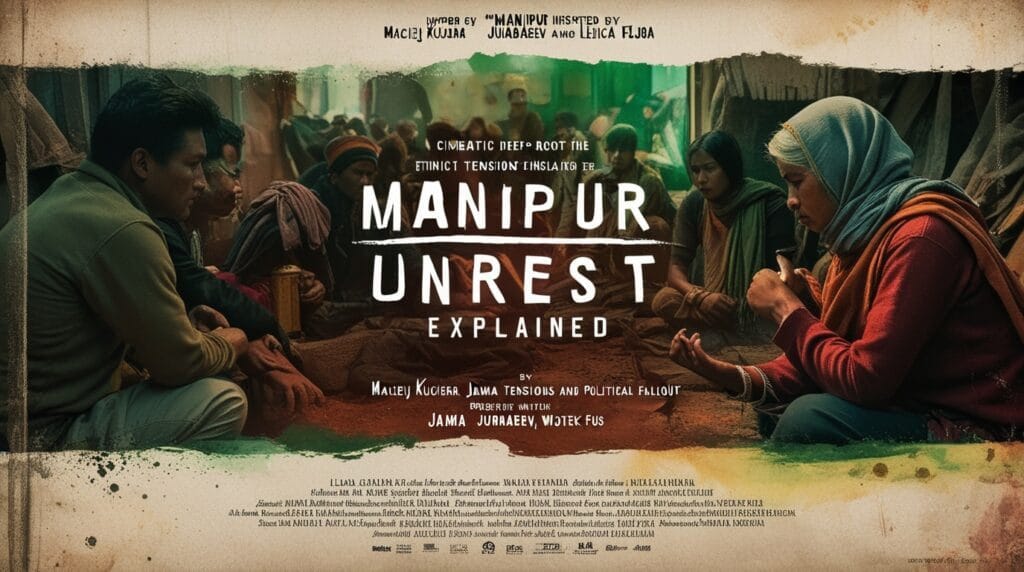Introduction
Manipur, a picturesque state in Northeast India, is grappling with a devastating crisis marked by ethnic violence, displacement, and humanitarian suffering. The conflict, primarily between the Meitei and Kuki communities, has deep historical roots and has been exacerbated by recent political developments. This article provides a comprehensive analysis of the complex factors that have fueled the Manipur crisis, its devastating impact, and the ongoing efforts to restore peace and stability.
Historical Background: A Legacy of Ethnic Divisions
Manipur’s history is marked by diverse ethnic groups with distinct identities, cultures, and historical grievances. The Meitei, the majority community concentrated in the valley, have historically held political dominance. The Kuki and Naga communities, residing primarily in the hills, have long felt marginalized and excluded from the state’s power structures.
- Colonial Legacy: The British colonial administration further exacerbated these divisions by implementing policies that favored the Meitei and restricted the land rights of hill communities.
- Insurgency Movements: The post-independence period saw the rise of various insurgent groups demanding greater autonomy and recognition for their communities. This further fueled tensions and sporadic violence.
- Socioeconomic Disparities: Economic disparities between the valley and hill regions, with the latter often neglected in terms of development, added to the existing grievances.
Key Components of the Manipur Crisis
- Demand for Scheduled Tribe (ST) Status: The recent violence was triggered by a court order directing the Manipur government to consider granting ST status to the Meitei community. This sparked fears among the Kuki and Naga communities of further marginalization and loss of land rights, leading to protests and violent clashes.
- Land Rights and Forest Evictions: Ongoing efforts by the state government to evict tribal communities from forest lands, ostensibly for conservation purposes, have further fueled resentment and mistrust.
- Political Manipulation: Accusations of political manipulation and the perceived bias of the state government towards the Meitei community have deepened the divide and eroded trust in the political system.
- Spread of Misinformation: The rapid spread of misinformation and hate speech on social media has amplified tensions and contributed to the escalation of violence.
Multifaceted Perspectives on the Manipur Crisis
- Meitei Community: The Meitei community argues that they are historically disadvantaged and deserve ST status for their protection and development. They accuse the Kuki community of encroachment on their land and resources.
- Kuki and Naga Communities: These communities fear that granting ST status to the Meitei would further marginalize them and threaten their land rights. They accuse the state government of discrimination and neglect.
- Civil Society Organizations: Civil society groups emphasize the need for dialogue, reconciliation, and addressing the root causes of the conflict to achieve lasting peace.
Impact and Implications: Devastating Consequences
The Manipur crisis has had a devastating impact on the region:
- Humanitarian Crisis: Thousands have been displaced, homes and businesses destroyed, and lives lost. The violence has created a humanitarian emergency, with many people in need of urgent assistance.
- Economic Disruption: The conflict has disrupted economic activity, hampered trade, and created a climate of fear and uncertainty.
- Social Fragmentation: The violence has deepened social divisions, creating an atmosphere of mistrust and animosity between communities.
Current Developments and Future Outlook: The Path to Peace
The situation in Manipur remains tense, but there have been some positive developments:
- Peace Talks: The government has initiated peace talks with various stakeholders to address their concerns and find a peaceful resolution to the crisis.
- Security Measures: Additional security forces have been deployed to maintain law and order and prevent further violence.
- Humanitarian Aid: Efforts are underway to provide relief and support to those affected by the conflict.
The future of Manipur depends on the success of these peace efforts and the willingness of all communities to engage in dialogue and reconciliation. Building trust, addressing grievances, and promoting inclusive development are essential for lasting peace and stability.
Frequently Asked Questions (FAQs)
- What are the main reasons behind the Manipur crisis? The crisis is fueled by historical grievances, ethnic tensions, demands for ST status, land rights disputes, political manipulation, and the spread of misinformation.
- Who are the main communities involved in the conflict? The conflict primarily involves the Meitei, Kuki, and Naga communities.
- What are the consequences of the Manipur crisis? The crisis has resulted in a humanitarian emergency, economic disruption, social fragmentation, and loss of life.
Conclusion
The Manipur crisis is a complex and deeply rooted conflict with far-reaching consequences. Understanding the historical context, ethnic tensions, and political factors is crucial for finding a lasting solution. While the challenges are immense, the ongoing peace efforts and the resilience of the people of Manipur offer hope for a future of peace, reconciliation, and inclusive development.

Sunil Garnayak is an expert in Indian news with extensive knowledge of the nation’s political, social, and economic landscape and international relations. With years of experience in journalism, Sunil delivers in-depth analysis and accurate reporting that keeps readers informed about the latest developments in India. His commitment to factual accuracy and nuanced storytelling ensures that his articles provide valuable insights into the country’s most pressing issues.



